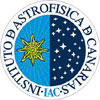How Kepler Derived His Laws of Planetary Motion
- Johannes Kepler Gesammelte Werke (Munich 1937 -), cited as KGW.
- Johannes Kepler: New Astronomy, translated by W. H. Donahue (CUP 1992), cited as Donahue.
- The Harmony of the World by Johannes Kepler, translated by E. J. Aiton, A. M. Duncan, J. V. Field (American Philosophical Society, 1997) cited as Aiton et al.
What Kepler (1571-1630) achieved is especially impressive since he had only traditional tools and techniques at his disposal. So it would be an anachronism to introduce any analysis that involved calculus, and even symbolic notation will be used here sparingly, as an alternative way of expressing the geometrical relations that Kepler himself used.
Visitors to this site who want to know the modern form of Kepler's three laws will find them stated initially in each document, followed by an account of how Kepler discovered each of them, taken from the original sources. The first two laws are concerned with the motion of a particular planet (Mars), which happened to be the only planet for which Tycho Brahe's superb set of naked-eye (non-telescopic) observations were accurate enough to determine the path. In combination, the two laws describe the motion of the planet with respect to position and to time, to specify both where the planet was, and when it was there. For this dual purpose, Kepler introduced the term 'orbit' into astronomical usage. Despite his lack of sophisticated tools, Kepler did indeed prove his statements to modern standards.
The third law is concerned with the planetary system as a whole: that is, the six planets (including the Earth) that made up the solar system in Kepler's day, since they are the only ones visible with the naked eye. Kepler also verified that the third law applied to the four satellites of Jupiter discovered by Galileo.* The laws resulted in an improved accuracy of almost two orders of magnitude over the Copernican and Ptolemaic theories in the prediction of planetary positions.
*Johannes Kepler: Epitome astronomiae copernicanae, Book IV, Part II, Section 6 (KGW VII, p. 318, ll. 34-39).
T. J. Mahoney
Third Law (in preparation)

